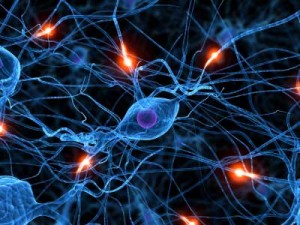
Chronic migraines as a progressive brain disorder
Sounds like a scary title, huh? Good, because if you suffer from migraines, you NEED to understand how serious this truly is.
And it is not about controlling the headache. Although this may be the immediate need, this limited approach does nothing for protecting your brain. And make no mistake–migraine sufferers have a greatly increased risk for things like heart disease, stroke and dementia. Masking the headache with medication does not change your increased risk–it’s still going to happen unless you do something about it.
The current research on migraines follow two related pathways: mitochondrial dysfunction and vascular dysfunction. Both share aspects in common, but the best thing is that lifestyle changes to improve one also effects the other. Here’s the basics.
The mitochondrial dysfunction model begins with, shockingly, the mitochondria. Think way back to your high school biology class and the anatomy of a cell when you first learned about the mitochondria. The little “powerhouse of the cell.” That little organelle within the cell that helps to generate energy for a cell. And the “energy currency” for every cell is adenosine triphosphate, or ATP. There are some billion or so reactions that occur in our body EVERY SECOND, and each one of these requires a molecule of ATP to get the job done. Some tissues, like fat, use very little energy. Others, like the heart, our muscles and our brain, use much more. At rest, the nervous system, which includes our brain, is the greatest utilizer of ATP in the body. Once we start moving, the muscles take over and have the greatest need.
Imagine that. As you sit here reading this, your brain is requiring mass amounts of energy just to process the information. So what does this mean? It means that each cell of the nervous system requires thousands of mitochondria just to generate the energy needed for a brain cell just to perform its basic functions. And each of these mitochondria are little factories churning out ATP for the brain cell to use at an enormous rate. Evidence has been present for several decades that the protection and nutritional support of the mitochondria needs to be an integral part of avoiding, reducing the severity of and reducing the long-term ramifications of migraines and seizures.
With this model, anything that harms the mitochondria and interferes with a brain cell’s ability to make energy will contribute to chronic migraine headaches. Anything that helps the mitochondria can provide chronic migraine relief.
In the vascular dysfunction model, problems with the blood vessels, especially the very tiny blood vessels that feed the tissues of the brain, lead to the headaches. Imagine the flow through a blood vessel becoming rapidly choked off or the flow at least becoming more turbulent and restricted. The brain cells that depend on this blood flow are going to get pretty pissed off when it is cut off. With this model, an anti-cardiovascular disease lifestyle is the best option. Ironically, this lifestyle will also improve mitochondrial dysfunction.
With either model, typical medications used to treat migraine headaches do not fix anything. And yet most of the migraine-oriented websites and online communities are still funded by drug companies and never promote real discussions about underlying pathology or how to improve brain function. Without this open conversation about these two models of migraine headaches, migraine sufferers will continue to be at long term risk of cognitive decline, stroke and heart disease. This particular article delves into the concept that chronic migraine headaches are a progressive brain disorder and should be addressed as such.
We need to wake up and start to realize that migraines CAN be improved or cured with the right lifestyle changes.
